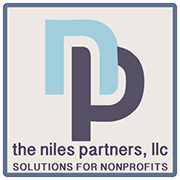If you serve on a board or committee for a nonprofit organization, there’s one topic that’s more likely to stymie you than others—and that’s the financials. Unless you have a CPA after your name, finance is typically the least understood aspect of nonprofit governance. And, yet, the fiduciary responsibility of boards is among its most important legal obligations.
In our experience, when questioned, very few board members actually admitted to understanding the financials. And, most respondents acknowledged that the financial report during board meetings found many directors staring at pages of figures in quiet confusion. The bottom line is that nonprofit organizations must provide visible and conscious efforts that help each director to read, understand and interpret the nonprofit’s financial statements.
Having earned a tax-exempt status by the Internal Revenue Service, nonprofit financial statements have some unique variations when compared to private enterprise. These reports help a board member to see how an important community organization is being sustained while tracking the use of charitable dollars that fund vitally needed services. Interestingly enough, nonprofit organizations generally have more restrictions placed on their revenues as compared to enterprises of similar budget size in the private sector.
Government agencies that contract with community organizations regularly seek to audit nonprofits to assure compliance in the proper use of public funds for needed services. Unfortunately, there are countless board members and entire boards of directors who are dangerously unaware of the current financial situation of their organizations.
The best way to bring a board of directors up to speed on their fiduciary obligations is to create a volunteer structure that guarantees a “check and balance” system in the organization. A volunteer-led finance committee and aseparate auditing committee invite financial professionals to volunteer their expertise to provide information and guidance to the board.
Every financial statement that is presented to the board should be accompanied by a cover memorandum that clearly states a fair interpretation of the financial position of the organization using plain language. Specific items, such as significant variances, should be noted in the memorandum in practical terms so that a board has every opportunity to exercise its “due diligence.” Not only does this process invite engaged and informed boards, it also actively protects the personal liability of each board member.
There is a certain amount of personal risk that nonprofit board members face as stewards of charitable and governmental funds aimed atcommunity service. For example,nonprofit organizations, like any other employer, cannot manage their payroll tax obligations as though these amounts were discretionary accounts payable. There is well documented evidence that board members of a nonprofit can be held personally liable for payroll taxes found to be in arrears along with any accrued penalties and interest.
We highly recommend that nonprofit organizations include training as an essential part of each board meeting so that members are provided on-going support to actively engage in their governance responsibilities.
“Reading and Understanding the Financial Statements,” is an important topic that should be presented periodically in addition to including the topic in an annual board orientation program. Perhaps the most universally-held myth about financial management in the third sector is that nonprofits should not actually generate a profit. This is the furthest from the truth. In nonprofit speak, this is called realizing “ a net gain.”
We firmly believe that solid nonprofit organizations aspire to generate more revenue each year than they expend. We also believe that being a self-sustaining nonprofit is a worthy goal. Net gains provide dollars to reinvest in providing more services, compensate for additional expenses not covered by reimbursement contracts and create a reasonable reserve for those unforeseen times when dollars are needed without having to sacrifice services or jobs.
Financial management does not have to be a difficult task for a board. Simple steps such as training, plain language documentation, excellent financial volunteers, and dispelling old myths can make the biggest difference in protecting boards and organizations from making the biggest mistakes.




Recent Comments